Contents
Several historical chronicles were written at the Abbey of Croyland, which was the wealthiest religious foundation in eastern England during the Middle Ages. Alison Weir writes that the chronicles dated before 1117 are "spurious", while the three anonymously written "continuations" that span the periods 1144–1469, 1459–1486 and 1485–1486 are genuine. [1]
The first entry of the chronicle concerns 655 AD. Text credited to the Abbot Ingulf follows the initial founding of Croyland Abbey, dedicated to St Guthlac by King Æthelbald, as well as its destruction by the Danes in the late 9th century, and the rebuilding of the monastery. A forged part of the text was formerly used to support the existence of a form of the congé d'élire —royal power over investiture of bishops—in Anglo-Saxon England prior to the Norman Conquest.
The part that covers the years 1459–1486, called the Second Continuation, was written in April 1486, after Henry Tudor had become King Henry VII of England. The text is concerned primarily with the prelude of the War of the Roses, and mild recounting of the battles fought between Richard III and Henry VII. It was written by someone who had access to information from the court of Richard III—described as being a doctor of canon law and member of Edward IV's council. Some historians believe that author was John Russell, Bishop of Lincoln, who was Richard's Lord Chancellor for most of his reign (until Richard dismissed him on 24 July 1485). Others conclude the work was written by a monk of Crowland who has edited a secular source.
Over the years, there has been confusion between the second and third continuators, and the fourth continuator claims not to know the identity of the third. It is, in fact, the second continuator (covering the period 1459–1486) who claims to be writing in April 1486, and, sure enough, this section ends with the marriage of Henry VII of England and Elizabeth of York and the rebellion that followed. This date ties in with the survival of a copy of Titulus Regius in the text, and Russell is known to have been at Crowland during April 1486.
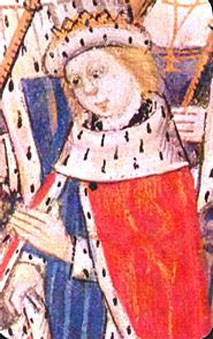
Edward V was King of England from 9 April to 25 June 1483. He succeeded his father, Edward IV, upon the latter's death. Edward V was never crowned, and his brief reign was dominated by the influence of his uncle and Lord Protector, the Duke of Gloucester, who deposed him to reign as King Richard III; this was confirmed by the Titulus Regius, an Act of Parliament which denounced any further claims through Edward IV's heirs by delegitimising Edward V and all of his siblings. This was later repealed by Henry VII, who wished to legitimise his reign by marrying Elizabeth of York, Edward V's eldest sister.
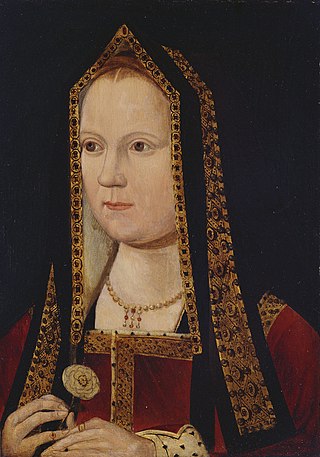
Elizabeth of York was Queen of England from her marriage to King Henry VII on 18 January 1486 until her death in 1503. She was the daughter of King Edward IV and his wife, Elizabeth Woodville, and her marriage to Henry VII followed his victory at the Battle of Bosworth Field, which marked the end of the civil war known as the Wars of the Roses.

The Princes in the Tower refers to the mystery of the fate of the deposed King Edward V of England and his younger brother Prince Richard of Shrewsbury, Duke of York, heirs to the throne of King Edward IV of England. The brothers were the only sons of the king by his queen, Elizabeth Woodville, living at the time of their father's death in 1483. Aged 12 and 9 years old, respectively, they were lodged in the Tower of London by their paternal uncle and England's regent, Richard, Duke of Gloucester, in preparation for Edward V's forthcoming coronation. Before the young king's coronation, however, he and his brother were declared illegitimate by Parliament. Gloucester ascended the throne as Richard III.
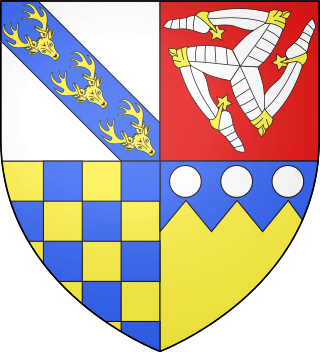
Thomas Stanley, 1st Earl of Derby, KG was an English nobleman. He was the stepfather of King Henry VII of England. He was the eldest son of Thomas Stanley, 1st Baron Stanley and Joan Goushill.

Crowland or Croyland is a town in the South Holland district of Lincolnshire, England. It is situated between Peterborough and Spalding. Crowland contains two sites of historical interest, Crowland Abbey and Trinity Bridge.
Thomas Walsingham was an English chronicler, and is the source of much of the knowledge of the reigns of Richard II, Henry IV, Henry V and the latter reign of Edward III depicting the decline of the state of affairs of the English. He also documented the careers of John Wycliff and Wat Tyler.
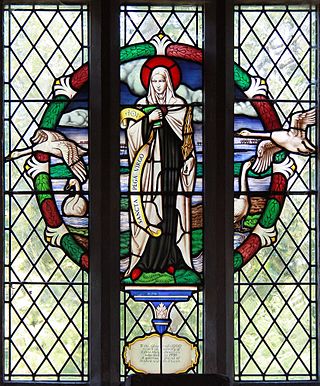
Pega is a Christian saint who was an anchoress in the ancient Anglo-Saxon kingdom of Mercia, and the sister of St Guthlac.

Ingulf was the Benedictine abbot of Crowland from 1087.

Crowland Abbey is a Church of England parish church, formerly part of a Benedictine abbey church, in Crowland in the English county of Lincolnshire. It is a Grade I listed building.
William of Ramsey was a 13th-century English Benedictine monk of Croyland Abbey, born at Ramsey, Huntingdonshire.

Thurcytel was abbot of Crowland and perhaps also of Bedford Abbey.

The Stafford and Lovell rebellion was the first armed uprising against King Henry VII after he won the crown at the Battle of Bosworth in 1485. The uprising was led by Francis Lovell, Viscount Lovell, along with Sir Humphrey Stafford and Thomas Stafford, brothers from Grafton, Worcestershire. The uprising occurred during Eastertime 1486.
Pseudo-Ingulf is the name given to an unknown English author of the Historia Monasterii Croylandensis, also known as the Croyland Chronicle. Nothing certain is known of Pseudo-Ingulf although it is generally assumed that he was connected with Croyland Abbey.
Events from the 1480s in England. This decade marks the beginning of the Tudor period.
The Chronicon Abbatiae de Evesham or Chronicle of the Abbey of Evesham, sometimes the Evesham Chronicle, is a medieval chronicle written at and about Evesham Abbey in Worcestershire in western England.

John of Wallingford was a Benedictine monk at the Abbey of St Albans, who served as the abbey's infirmarer at some time between c.1246-7 and his death in 1258. He is now mostly known through a manuscript containing a miscellaneous collection of material, mostly written up by Wallingford from various works by his contemporary at the abbey Matthew Paris, which survives as British Library Cotton MS Julius D VII. This manuscript includes the so-called Chronica Joannis Wallingford or Chronicle of John of Wallingford.
Henry Thomas Riley was an English translator, lexicographer, and antiquary.

Saints Tancred, Torthred, and Tova were three Anglo-Saxon siblings who were saints, hermits and martyrs of the ninth century. Their feast day was celebrated on 30 September at Thorney and Deeping.
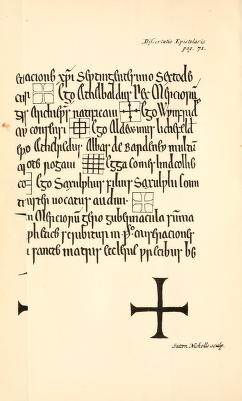
The Historia Croylandensis is a series of bound documents, allegedly from the 15th century, containing a fake history of the Benedictine abbey of Croyland in Lincolnshire, England.
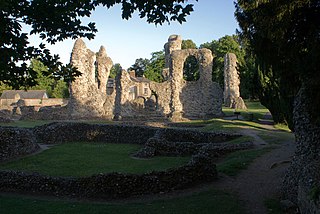
The Bury Chronicle, Bury St Edmunds Chronicle, or Chronicle of Bury St Edmunds, formerly also known as the Chronica Abbreviata, is a medieval English chronicle compiled by John of Taxster and two other unknown Benedictine monks of Bury St Edmunds Abbey in the 13th and 14th centuries.












